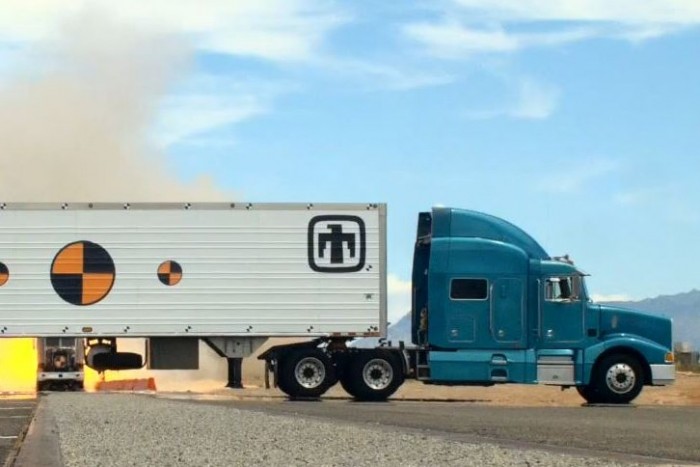Cartridges, radioactive materials and other dangerous materials are transported at various stages of preparation by road between US nuclear weapons development laboratories and bases, which could cause a serious disaster if the transport vehicle was involved in an accident and even greater tragedy if the terrorists seized the means of transportation.
Therefore, the competent authorities have ordered the development of a group of special vehicles that will be able to deliver the elements of the nuclear arsenal in a reassuring manner over the next twenty years.
It took 13 months to build the first prototype, and it took another half a year to equip it with the necessary electronic systems. Pregnancy tests, vibration tests, severe environmental influences followed, and now fracture tests may come.
Collision safety in this case concerned the cargo more than the driver, so the semi-trailer was tested in an extreme way: another truck was installed on a rocket sled, accelerated to highway speed, and was pushed to the towing from the side.
Unfortunately, no video has been released about the test, but looking at the pictures could be a serious devastation – or not, because that’s the point. The test was otherwise monitored with 400 different sensors, which may seem overkill, but is necessary: the manufacturer can only build three prototypes before proceeding to produce the final assembly, so they must accurately record any bits of data.












































